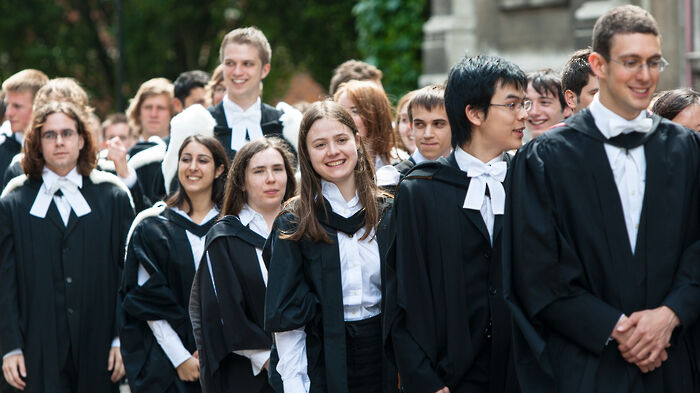Just 3% of Cambridge entrants come from regions with lowest university participation
The 2016 statistics place Cambridge second last of all Russell Group institutions, but the University’s own 2017 figures suggest the picture may have improved slightly

Only 3% of Cambridge University’s home undergraduate intake in 2016/2017 came from neighbourhoods with the lowest participation in higher education, according to new government statistics.
The statistics, published yesterday by the Higher Education Statistics Agency (HESA), shed light on the level of success UK universities are achieving in their efforts to widen participation, including to those who live in areas in the bottom 20% nationally for their rate of progression to higher education.
Out of 2,505 non-mature home students with available data admitted to Cambridge in 2016, 75 students hailed from low-participation neighbourhoods. The same number of students in this category were admitted to Oxford. However, Oxford’s slightly larger undergraduate home intake of 2,570 placed its percentage from low-participation neighbourhoods at 2.8% – the lowest intake in the Russell Group, and the only Russell Group institution with a percentage lower than Cambridge.
Got a story for us?
Seen something you think Varsity should be talking about? Contact our News team at news@varsity.co.uk.
University College London, Imperial College, and Durham followed Oxford and Cambridge among Russell Group institutions, with low-participation neighbourhood intakes of 3.2%, 3.4%, and 4.2%, respectively. University of Liverpool scored the highest among the Russell Group for 2016/2017, with an intake of 9.7%. Nationally, 11.4% of entrants into higher education hail from low-participation neighbourhoods, as defined by POLAR3 classification.
Efforts to widen access to Oxbridge have come under significant criticism recently, including from Labour MP David Lammy, who branded the colleges ‘fiefdoms of entrenched privilege’.
The data released yesterday shows that Cambridge’s intake from neighbourhoods with the lowest engagement in higher education had fallen very slightly from its 2015/2016 figure of 3.1%.
Yesterday’s announcement follows figures released last month by HESA, which found that 62.6% of Cambridge home intake in 2016 came from state schools, making it the fifth lowest for state school intake in the sector.
According to information published by the University last September, Cambridge increased the percentage of students from low-participation areas in the 2017 cohort. The data suggest that over 4.5% of its offers were made to students from neighborhoods in the lowest quintile for participation in higher education. It also reported an increase to over 63% in the percentage of students admitted from state schools.
Students whose postcodes fell in the first quintile, or lowest 20%, for rates of progression to higher education were classified as being from low-participation neighbourhoods. The data includes all entrants under the age of 21 at the time of commencing their studies.
HESA altered its methodology from previous years for identifying low participation areas for the 2016/2017 cohort, from a POLAR3 to a POLAR4 classification method. The POLAR4 classification included more recent student cohort data, defined geographical location differently, and modified its methodology for population estimation to accommodate changes in data availability.
Cambridge University’s percentage intake from low-participation neighbourhoods saw an equivalent value of 3% under both classifications for 2016/2017, but its intake in 2015/2016 dropped to 2.7% when POLAR4 was used, from an intake of 3.1% under POLAR3 classification.
Commenting on the statistics, a University of Cambridge spokesperson said: “The University is never complacent about the need to attract more admissions from state schools and to that end is currently spending £5 million pounds a year on outreach activities across the UK”.
 Features / Should I stay or should I go? Cambridge students and alumni reflect on how their memories stay with them15 December 2025
Features / Should I stay or should I go? Cambridge students and alumni reflect on how their memories stay with them15 December 2025 News / Dons warn PM about Vet School closure16 December 2025
News / Dons warn PM about Vet School closure16 December 2025 News / Cambridge study finds students learn better with notes than AI13 December 2025
News / Cambridge study finds students learn better with notes than AI13 December 2025 News / News In Brief: Michaelmas marriages, monogamous mammals, and messaging manipulation15 December 2025
News / News In Brief: Michaelmas marriages, monogamous mammals, and messaging manipulation15 December 2025 News / SU reluctantly registers controversial women’s soc18 December 2025
News / SU reluctantly registers controversial women’s soc18 December 2025










